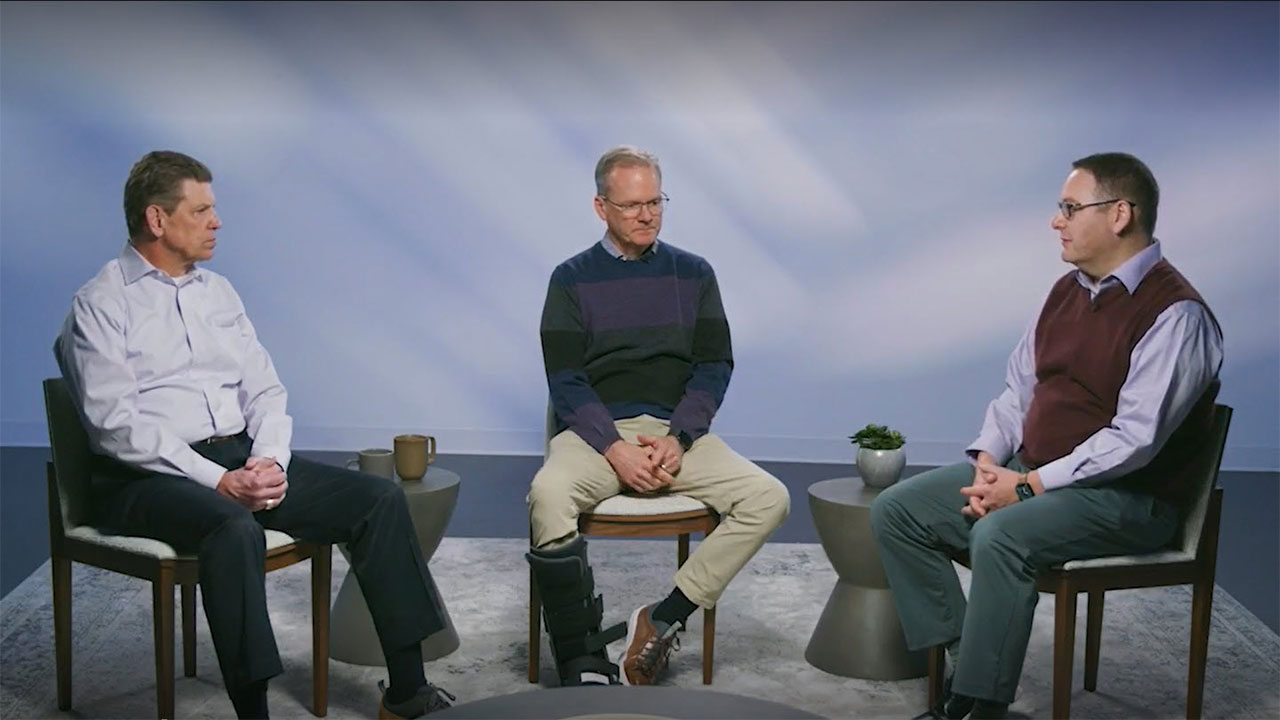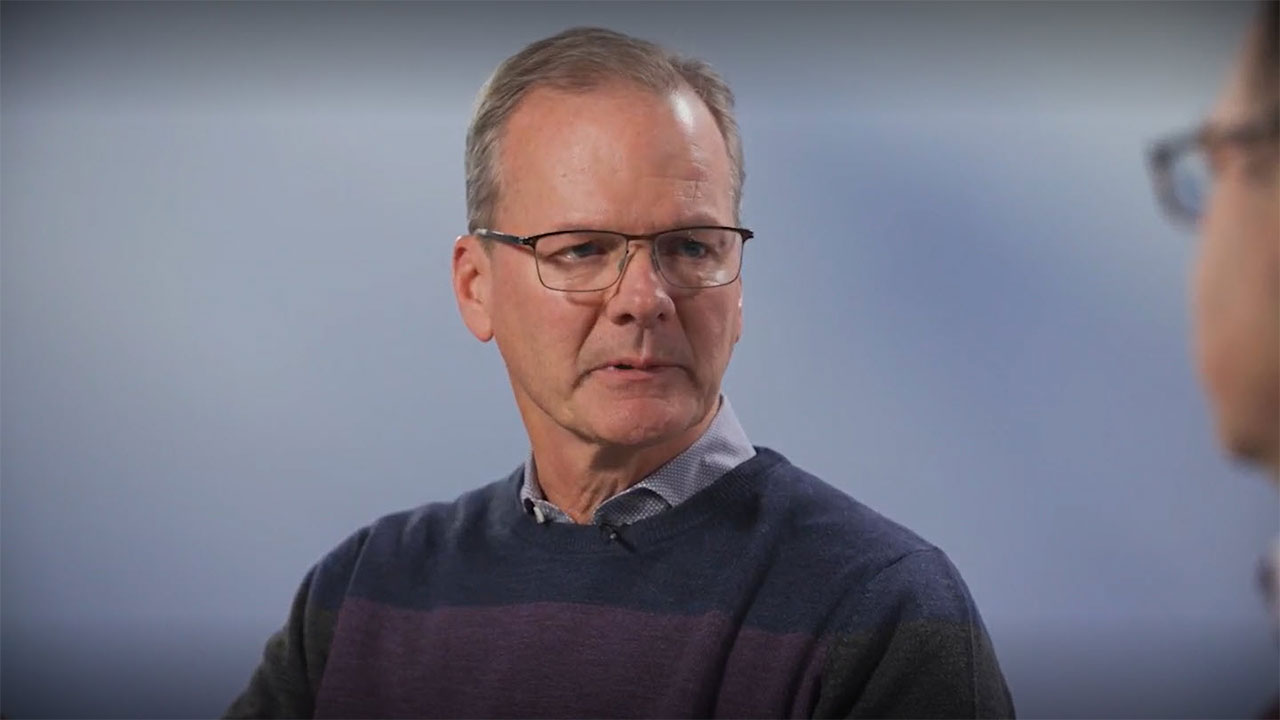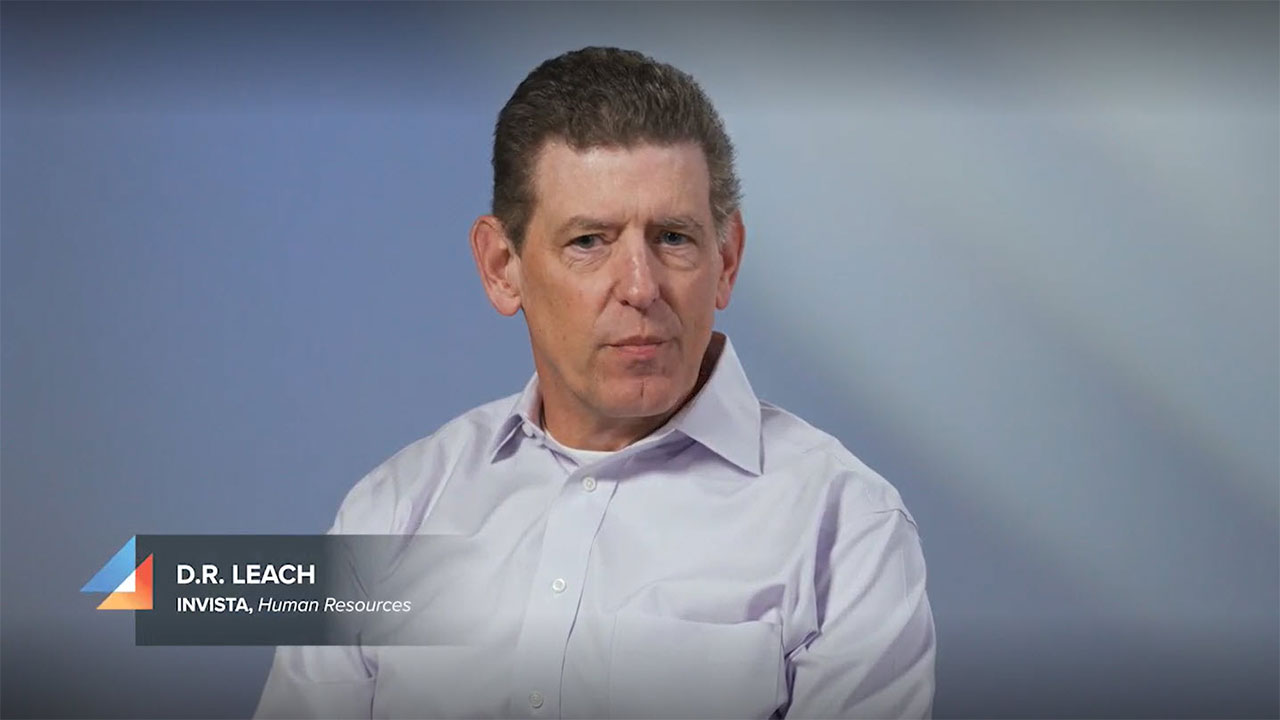INVISTA: The Consequences of Not Applying Our Framework
Koch’s acquisitions of KoSa and INVISTA suffered from several failures to properly apply Principle Based Management™. Read how INVISTA overcame its gaps, weathered a recession and built a culture of principled entrepreneurs.
Before Koch acquires a business or asset, we want to know what we are buying. We rely on due diligence – a comprehensive appraisal process – to help gain that knowledge. Our experience with INVISTA (at the time, Koch’s largest-ever acquisition) was a tough reminder that due diligence needs to go beyond spreadsheets or walk-throughs. Culture has to be evaluated, too. Acquiring a company with the wrong culture – one with paradigms that conflict with our principle-based framework – can make an acquisition much more costly.
INVISTA also taught us there is a steep price for not practicing what we preach. When we fail to apply our framework correctly and consistently, the consequences can be measured in billions of dollars, thousands of jobs and untold lost opportunities.
The transformation of our Corpus Christi complex in the 1990s indirectly led to the acquisition of INVISTA in 2004. That transformation enabled Corpus to become a leading producer of paraxylene, the main intermediate chemical for making polyester. This created an interest in acquiring Trevira, the polyester unit of Hoechst Celanese Corporation. Together with a joint venture partner, Koch acquired Trevira in 1998 and renamed it KoSa. (We bought out our JV partner in 2001 after it became evident they did not share our vision and values.)
That acquisition, in turn, led to acquiring INVISTA (formerly DuPont Textiles and Interiors), a leading producer of nylon and spandex, which also made polyester products. INVISTA owned well-known brands such as Stainmaster® and Lycra®, and had a global presence. By combining KoSa with INVISTA, we believed we could improve the performance of both businesses. That assumption was wrong.
By the time of the INVISTA acquisition, KoSa’s business was deteriorating, largely due to China’s increased construction of polyester plants using superior technology. As China’s learning curve accelerated, it was able to build less costly plants and operate them more efficiently. These developments caused a major oversupply of polyester worldwide. The net result was that KoSa’s plants became uneconomic. Several had to be shut down and the remainder were eventually sold at a loss.
The due diligence that could be performed for INVISTA was strictly limited. For one thing, there was no information on the performance of individual plants or products, which made it impossible to do marginal analysis. Our due diligence efforts were also stymied by a lack of access to critical facilities and personnel, limiting first-hand knowledge of INVISTA’s operations. DuPont claimed the on-site presence of Koch teams would signal a sale and demoralize employees. It offered indemnification instead, saying Koch would be compensated if operations were not “as advertised.”
Unable to gather all the information critical to our decision making, we relied on DuPont’s indemnification offer in good faith and assumed it would pay for any undisclosed problems. This turned out to be another costly mistake.
At a macro level, our due diligence team was able to identify material gaps in all five dimensions of our management framework. In particular, they discovered a sizeable problem with DuPont’s transfer pricing for ADN, a chemical intermediate used for making nylon. DuPont provided its facilities with ADN at the cost of production rather than the market price charged to external customers. Without these subsidies, Koch calculated that DuPont’s nylon fiber businesses would lose $240 million a year.
There was also evidence of poor economic thinking elsewhere. The due diligence team identified $230 million in excess overhead and the potential for saving another $300 million in operating costs. “When we ran those numbers on acquiring INVISTA,” recalled Kelly Bulloch, INVISTA’s first Koch-era CFO, “we figured we could improve its profitability significantly.” Sure enough, INVISTA’s net income more than doubled from 2004 to 2006, “which was a big deal for us. Based on those original measures, this acquisition looked like a success.”
Despite these improvements, many of INVISTA’s businesses and assets were still uncompetitive and saddled with an entitlement culture. Its lack of information systems made good decision making almost impossible. Even worse, after taking over operations, we quickly discovered an alarming number of compliance issues – so many and so serious that several units were immediately shut down. It took more than six months just to identify, document and self-report all the problems.
Dave Dotson, INVISTA’s new senior vice president of operations, summarized the situation this way: “DuPont’s rules-based culture was centered on processes and procedures – some of which had not been re-evaluated for more than 10 years. Leaders were held accountable to rules rather than results. In that kind of culture, stewardship and compliance tended to be considered costs to be minimized rather than principles to be upheld. Consequently, they used short-term thinking that favored low-cost solutions.”
Unfortunately, added Dotson, “the leaders we selected compounded those problems by imposing even more detailed rules to try to address the issues they found.” Ironically, many employees with the best knowledge to fix the compliance problems had already been let go as part of Koch’s so-called rapid transformation initiative. “So we worsened their rules-based, top-down culture and hampered ourselves from the start. It took years to undo that paradigm and begin to create a culture based on our framework.”
INVISTA’s legacy compliance issues forced the company into a consent decree with the U.S. Environmental Protection Agency and the Department of Justice. (That decree finally ended in early 2023.) INVISTA was obligated to spend about half a billion dollars on emission reduction projects across its U.S. sites and incurred several hundred million more in opportunity cost. As for DuPont’s indemnity guarantee, according to Ray Geoffroy, who handled litigation at INVISTA before becoming its general counsel: “After 12 years of dispute, DuPont ultimately agreed to pay the largest settlement ever received by a Koch company. But it was still far less than the damages we suffered.”
This experience taught us an important lesson: indemnification clauses are not reliable. “Once a sale is complete,” noted Geoffroy, “the incentive for the seller to assist the buyer disappears. You’re lucky if you recover a fraction of what you’ve lost.”
Even worse, these distractions and costs hindered the opportunity for true transformation at INVISTA for more than a decade. It affected the company’s ability to operate, its commercial relationships and its ability to apply our framework.
Another major mistake was not arranging for DuPont to temporarily provide the support services that didn’t come with the acquisition. Many employees with critical knowledge of the acquired assets were not transferred or made available to help. Consequently, “we lost an enormous amount of institutional knowledge and support systems,” said Steve Feilmeier, Koch’s CFO at the time. “It took us years and hundreds of millions of dollars to rebuild the necessary infrastructure.”
To solve the multitude of problems facing INVISTA and get it on the right track, Jeff Gentry, the CEO of Koch Mineral Services, was asked to replace INVISTA’s CEO in 2007. Gentry had led the transformation of Minerals and the acquisition of two businesses that have contributed to the transformation of Koch Industries: Farmland’s fertilizer business (which was the foundation for Koch Ag & Energy Solutions) and Georgia-Pacific’s pulp business (which led to the acquisition of GP).
Gentry was immediately confronted with what he called “all kinds of leadership issues.” Some leaders were simply unable to meet expectations for their role, “but more concerning was their failure to exemplify Our Values, especially of Integrity, Compliance and Respect. We had to fire seven of the top 12 leaders within a matter of months,” Gentry said. The fact that more than half of those fired came from Koch made the situation especially disappointing.
As if those challenges in establishing a principle-based culture were not enough, Gentry said he and the entire leadership team “quickly found ourselves in the fight of our lives” as the world was confronted with the greatest economic crisis in decades: the 2008 recession.
During its early years as a Koch company, markets had been good enough for INVISTA to make single-digit returns on capital consumed (ROCC). This was despite problems with KoSa; its cumulative losses totaled half a billion dollars, mainly on the sale and write-down of assets in 2008. But when the recession hit and INVISTA lost 70% of its nylon demand, overall profitability evaporated. INVISTA ended up losing $800 million in 2008 and another $500 million in 2009.
Despite all these problems and poor performance, Koch approved an investment of $30 million so that INVISTA could develop an improved process for making ADN, a critical nylon intermediate. “That kind of long-term thinking probably would not have happened at many public companies,” said Gentry. Although the probability of a payoff was years away, Koch believed that INVISTA could significantly improve its competitive advantage. That investment proved to be an important contributor to INVISTA’s future success.
During the next six years, INVISTA shut down underperforming or disadvantaged nylon plants and focused on those with the potential to build or sustain a competitive advantage. But as it did so, the company continued to face unacceptable ROCC. “It became clear that the business was declining faster than we were fixing it,” said Gentry.
INVISTA’s leadership team responded by dramatically revising the company’s vision in 2015. This involved more deeply analyzing capabilities – both INVISTA’s and its competitors’ – to truly understand where it had advantages.
It was then that leadership realized they had not been fully applying Koch’s framework, which called for only investing in those businesses with sustainable competitive advantages that could create superior, long-term results. There was to be no more holding onto assets that could not do so, even if they were currently profitable.
INVISTA’s new vision and heightened sense of urgency led to four step-changes across the organization. The first was to accelerate the transformation of INVISTA’s culture. Only then could the next three be accomplished:
Footprint optimization. INVISTA closed five major operating assets in North and South America that were either unprofitable or poorly located. This improved earnings before interest, taxes, depreciation and amortization (EBITDA) by $200 million a year. At about the same time, it began building a $2 billion nylon complex in China. This was an opportunity to create the lowest-cost, most-efficient facilities of their kind using world-class technology – and to do so in a region where the polymer market was growing by double digits.
Right-sizing the organization. Previously, whenever INVISTA shut down or sold portions of a plant, its SG&A (selling, general and administrative) costs were never fully right-sized relative to the new footprint. The organization was challenged to rethink all its structures and staffing using a bottom-up approach. This resulted in 2,400 further reductions in employees and contractors. “Those are not easy or pleasant decisions to make,” admitted Gentry, “but they were clearly necessary and resulted in another $200 million EBITDA improvement.”
Enterprise resource planning. INVISTA then set an example for all of Koch by investing in new, world-class ERP software and transforming its business processes. (These systems help manage millions of day-to-day transactions and activities such as accounting, supply chain operations, purchasing, compliance tracking and project management.) This initiative, called Business Process Transformation, replaced a hodgepodge of overlapping and obsolete programs that often couldn’t communicate with each other, while transforming business processes across the company. It made marginal analysis possible, dramatically enhancing knowledge, transparency and decision-making, and helping INVISTA improve in hundreds of areas – boosting EBITDA by $100 million.
Altogether, the improvements from these four transformations increased EBITDA by $500 million and led to record ROCC in 2017. But leadership saw there was even more potential. Following Koch’s 2018 Vision and Guiding Principles update, INVISTA revised its vision again, shifting the focus to creating a culture of Principled Entrepreneurship™. The need for personal transformation was communicated through hundreds of meetings which clearly set new expectations. That message was well-received, as evidenced by record ROCC in both 2018 and 2019.
This hard-won progress halted when the COVID pandemic disrupted almost every aspect of INVISTA’s operations in 2020. But even at the most-challenging point of the pandemic, a three-month period when facilities were operating at just a 50% utilization rate, the company managed to break even. (Previously INVISTA needed at least an 80% utilization rate to avoid losing money.) As business conditions improved and demand returned, INVISTA was back to setting a new record.
When Jeff Gentry retired in 2023 after almost 16 years at INVISTA, the company was a far cry from what Koch acquired. Prior to the acquisition, INVISTA (including KoSa) had 47 facilities that were losing hundreds of millions of dollars per year. Today, it operates just 14 facilities and is a valued Koch company that produced record ROCC (as high as 32%) in four of the past six years.
While proud of these improvements, Francis Murphy, INVISTA’s new CEO, is quick to acknowledge that the company now faces a new set of challenges – such as increased competition and static demand – and always will. “We know we must continually transform by improving the application of our framework to overcome these never-ending challenges,” Murphy said. “That’s the only way we can maximize INVISTA’s contributions to Koch’s long-term success.”


